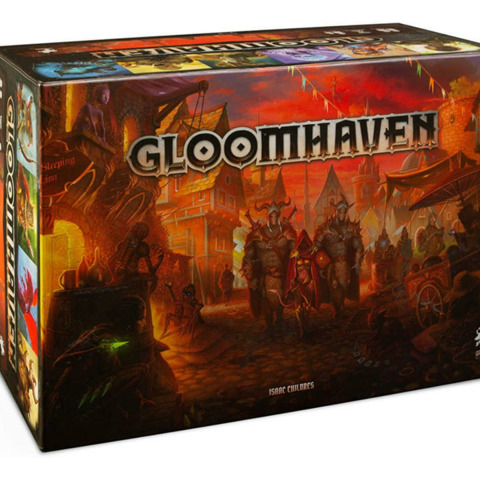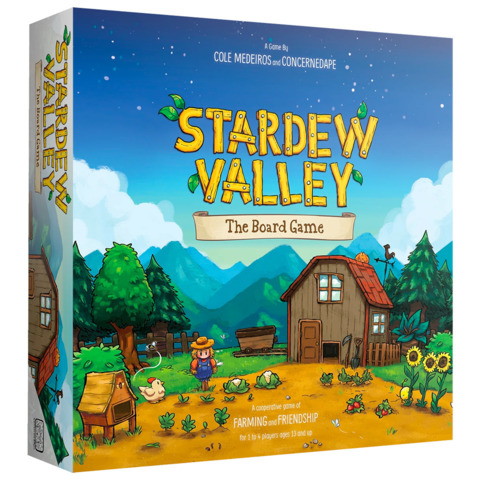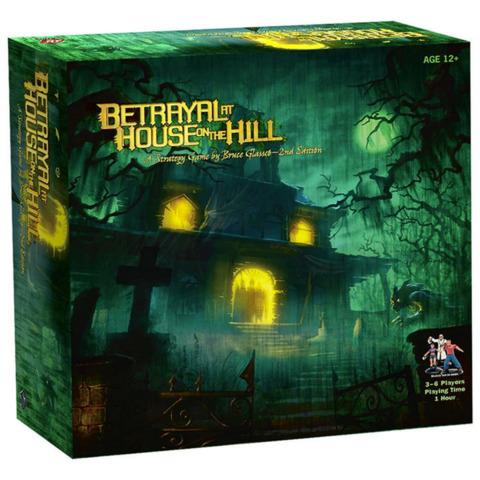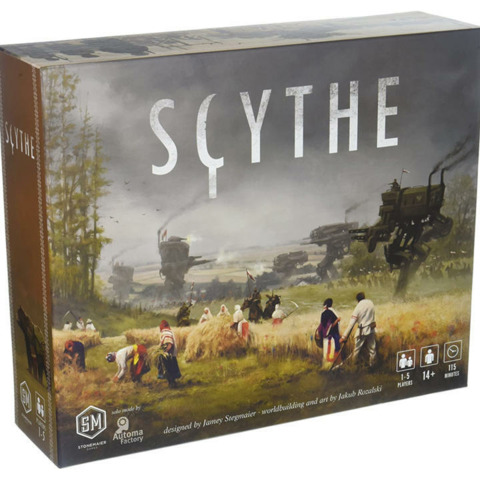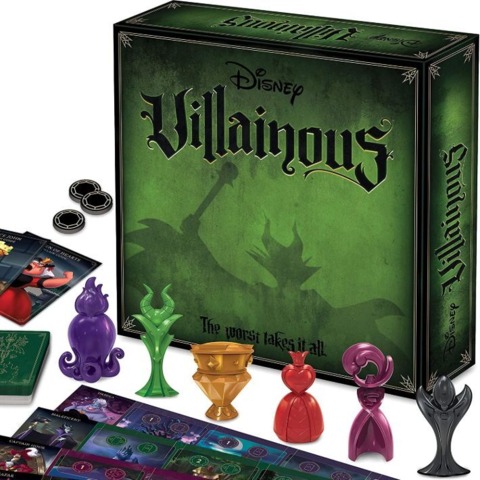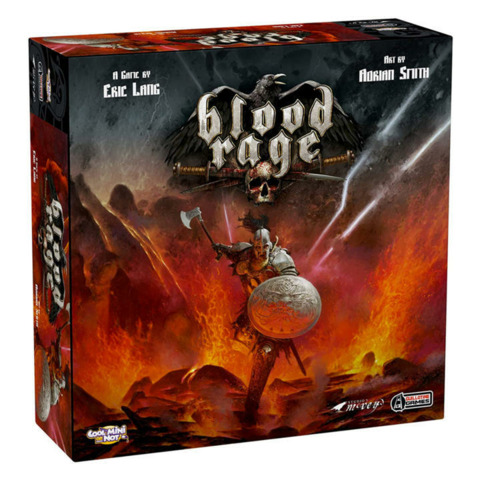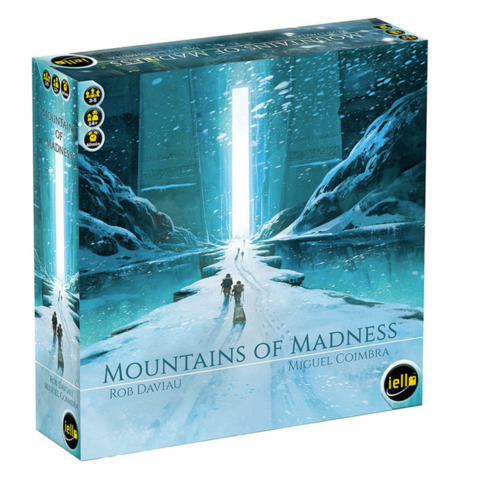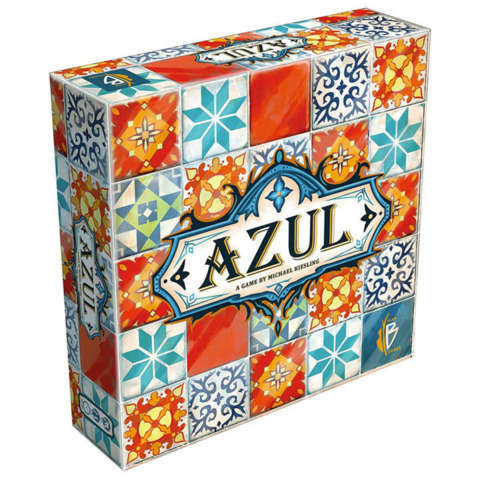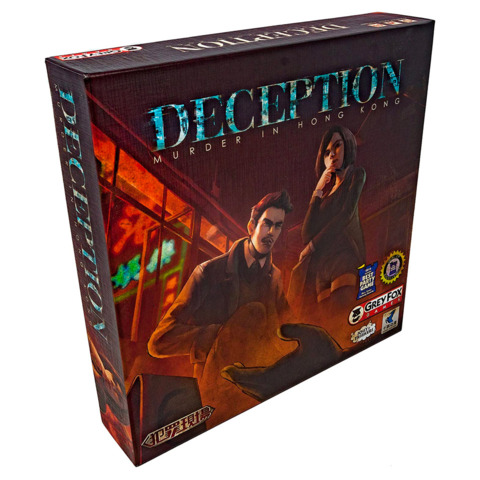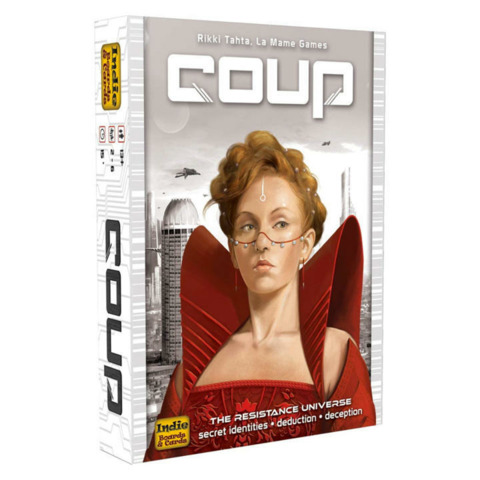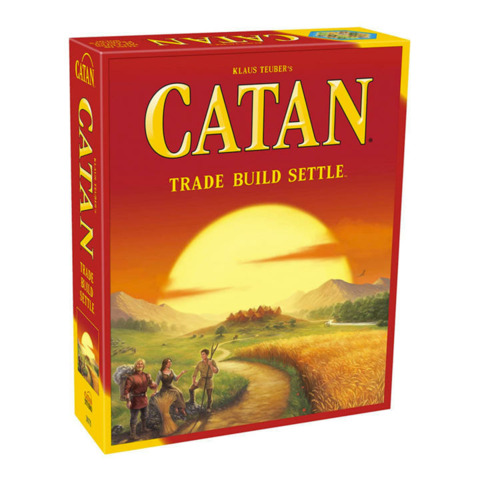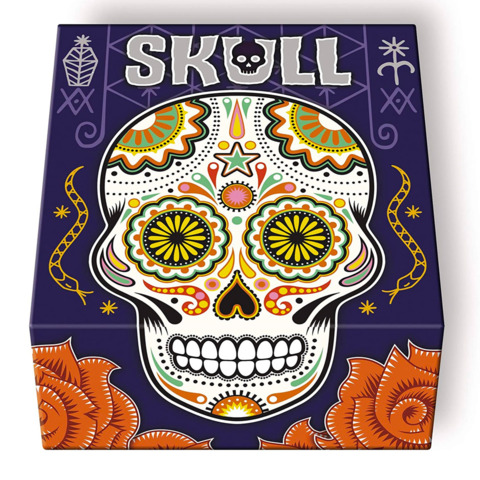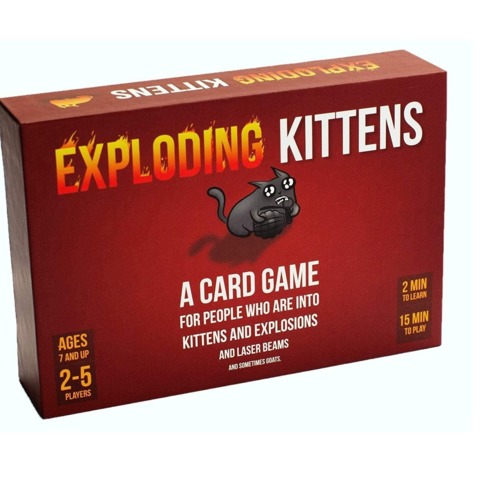The board game scene is bigger than ever and filled with tons of eclectic and fun games to play with family and friends. If your board game experience is mostly limited to the popular staples of your childhood, you’re certainly in for a treat with the best board games of 2022. Nowadays, there are narrative-based adventures, engrossing tabletop RPGs, deep and complex card games, brilliant strategy games, and better family-friendly options than ever before. There are even some highly enjoyable board games that you can play solo, which is awesome since it’s not always easy to find a group of people to play a new board game with. We’ve rounded up the best board games we’ve played recently. Our 25 picks for the best board games span across a wide variety of genres, so there should be something here for you regardless of your particular tastes.
When shopping for some new board games, it’s important to keep in mind who you’ll be playing with and what kind of time investment you’re down for. Will you be playing with folks who are already tabletop-savvy, or are you looking for more casual party games that anyone can jump in and play? Are you looking for games that can be played in quick, successive rounds, or are you willing to invest in a legacy game, one that’s played over multiple sessions with permanent changes made to the game each time? If you live with just one other person, are you interested in two-player board games? We’ve tried to include a variety of different board games in our list as well as a mix of tabletop classics and modern gems.
Another thing to keep in mind before we dive in: Many of the most popular board games can be played digitally these days. This includes official digital releases on platforms like Steam or the Nintendo eShop. Another great option is Tabletop Simulator, which offers official DLC for some of the great board games on this list as well as a massive library of mods for both popular and niche titles. If you don’t have space for a bunch of physical board games or live far away from most of your tabletop-loving friends, this is an alternate way to enjoy everything the wonderful world of board games has to offer.
With that said, here is our list of the best board games we’ve played and love–be sure to let us know your favorites as well in the comments down below.
Gloomhaven
Number of players: 1 to 4
Time to play: 1 to 2 hours
It’s difficult to talk about great board games without mentioning Gloomhaven, which multiple GameSpot staffers listed among their personal top three. There’s a reason this 2017 tactical combat game, which was host to an enormously successful Kickstarter campaign, maintains the No. 1 ranking on BoardGameGeek, the go-to board game site for many tabletop fans. Gloomhaven is a massive multi-session campaign where each person plays a wandering adventurer who develops their own skills and reasons for traveling over the course of the game, working together as a group to explore ruins, fight through dungeons, and gather loot (all represented by different game pieces and tokens). Throughout the game, you’ll make decisions that affect the ever-branching story, and each character has their own secret motives as well. Combat takes place on a grid that changes with each battle and involves drawing cards that determine your available actions, all without the need for dice.
Gloomhaven can look intimidating–its box weighs 22 pounds–but I’ve personally found it quite easy to pick up the rules and start playing (as someone who finds tabletop RPGs like D&D overwhelming). There’s also a digital adaptation in early access on Steam. Its campaign is much more focused on tactical combat than roleplaying, but if you’re into turn-based strategy and storylines that are deeply impacted by your actions, you’re in for a real treat with Gloomhaven.
Stardew Valley: The Board Game
Number of players: 1 to 4
Time to play: 45 minutes per player
Stardew Valley (the video game) is often thought of as a casual, relaxing game in which you go around romancing NPCs, planting crops, and taking care of animals, but Stardew Valley: The Board Game is neither casual nor relaxing. Instead, it’s a fairly deep and challenging co-op strategy game that involves racing against the clock to complete a series of goals before the end of Year 1. Don’t get us wrong: It’s incredibly fun. Whether you’ve already put hundreds of hours into the video game or just love a challenging co-op board game, you’ll find a ton to love here. The board and pieces are absolutely gorgeous, and almost every gameplay mechanic from the video game is represented in some fashion, including mine diving, fishing, and befriending villagers.
Because players only have a limited amount of moves and actions each turn, intense cooperation and planning is required in order to achieve everything you need to by the year’s end. Be warned that this is a longer game as well–a four-player game can easily take three hours to complete. However, we still highly recommend Stardew Valley: The Board Game as a faithful (and challenging) tabletop adaptation of everyone’s favorite farm sim. As of August 2021, the game is currently out of stock at the Stardew Valley store, but developer ConcernedApe has promised future printings, so keep an eye out.
Cuphead Dice Game
Number of players: 1 to 4
Time to play: 20 minutes
The Cuphead Dice Game isn’t quite as punishing as the original video game, but there’s still more than enough action to keep you glued to your seat. You’ll be rolling dice to load up on actions (jumps, parries, and attacks) before setting out to fight iconic bosses from the series. You can play solo or with up to four players, and the game is endlessly replayable–thanks to unlockable items and upgradable skills that carry over to your next playthrough. Sessions typically last less than a half-hour, although the Cuphead Dice Game is best experienced when tackling multiple runs during a single game night.
Pandemic Legacy
Number of players: 2 to 4
Time to play: 60 minutes
Pandemic Legacy: Season 1 ranks right behind Gloomhaven on BoardGameGeek’s list of the best board games, and it happens to be one of our favorites as well. This is a legacy-style board game, which means you play through it over multiple sessions, with choices made in one session permanently changing how the story plays out in later sessions. Legacy games often require physically altering the game–writing on cards, ripping some of them up, and placing stickers on various parts. Because of this, a legacy game is played out in a single campaign that you can only experience once per copy of the game.
Pandemic Legacy is one of the best legacy games you can buy, and it currently has three seasons available, including a recent prequel set during the Cold War, Pandemic Legacy Season 0. Each game functions as a standalone campaign, so there’s no need to have played the others first, though we recommend starting with Season 1. The co-op campaign will be played over the course of 12-24 sessions with two to four players (ideally four), so you’ll need a group that’s in it for the long haul. Your group will play as disease-fighting experts whose mission is to treat disease hotspots and research cures for each of the four plagues before a pandemic occurs, with unique roles such as Medic and Scientist that allow special rules for each player. New mechanics and twists are revealed over the course of the game, and intense cooperation is required as you race against time to find a cure and fight back against the looming pandemic.
Betrayal at House on the Hill
Number of players: 3 to 6
Time to play: 60 minutes
If you’re someone who finds haunted houses thrilling, you’re sure to love Betrayal at House on the Hill. Perfect for fans of horror or story-driven games, Betrayal begins with a group of people exploring a haunted house, drawing tiles as they enter a new room, with various events or items possible within. About halfway through the game, a “haunt” will be triggered, and one of the players will become the traitor, with the remaining players racing against the clock to meet their win condition before the traitor meets theirs. With 50 different scenarios in the base game–and another 50 added with the Widow’s Walk expansion–there are numerous ways Betrayal can play out, but it’s always a blast. Turn on some spooky music, dim the lights, and you’ve got yourself the perfect horror-themed board game night.
Plus, if you fall in love with Betrayal and want to take your game to the next level, there’s a fantastic legacy version available as well.
Root
Number of players: 2 to 4
Time to play: 60 to 90 minutes
Don’t be fooled by the adorable woodland creatures on its cover–Root is an asymmetrical war game that’s fairly complex, and you’ll probably need to play multiple times to fully get the hang of it. In Root, multiple factions are fighting for control of a forest kingdom: Marquise de Cat, who wants to harvest the woodland’s resources; the Eyrie Dynasty, birds who aim to build roosts throughout the forest as quickly as possible; the Woodland Alliance, forest creatures who build hideouts and spread sympathy for their cause; and the solo Vagabond, a warrior who moves through the woodland alone, forming alliances where it suits his own needs. Because each faction has completely different rules and goals, you’ll want to play as each group at least once. But while it takes some time to master, Root is an absolute blast to play as you experiment with different strategies and slowly learn how to play each faction well. With its charming art design and excellent replayability, Root is a fantastic game to pick up if you have a group that’s willing to master it over multiple sessions. A gorgeous digital version also released on Steam, iOS, and Android last year.
Scythe
Number of players: 1 to 5
Time to play: 90 to 115 minutes
Scythe is designed for one to five players, but it also comes with a built-in single-player mode, if you have trouble getting a group together or live alone. Scythe is set in an alternative history of 1920s Europe, which is recovering from a great war. Players control one of five factions that are competing to claim the stake in the land around a mysterious city-state known as the Factory, which played a major role in the great war with its armored mechs. As an engine-building game, players aim to build structures, upgrade their actions, enlist new recruits, and more to grow their riches and complete certain goals. And if you’re looking to play solo, the Automa mode throws in an AI opponent, using a deck of cards to determine its actions. With stunning artwork and deep world-building, Scythe is one of the best board games we’ve played, and it’s a great option for fans of resource management, territory control, and general empire-building. You can play Scythe on Steam too.
King of Tokyo
Number of players: 2 to 6
Time to play: 30 minutes
Designed by Magic: The Gathering creator Richard Garfield, King of Tokyo is a card game that has you and your friends go head-to-head as monsters battling for control of Tokyo. You’ll wield the fierce power of one of six monsters, aiming either to destroy Tokyo by garnering 20 victory points or to be the only monster still standing at the end. You’ll roll dice to determine your actions and potentially gain victory points, and special playing cards will give your monster a new effect, like a second head that lets you roll an extra die, body armor, and more. King of Tokyo is easy to learn, and each round lasts only about a half-hour, making this a quick and fun family game to teach to a new group.
Villainous
Number of players: 2 to 6
Time to play: 50 minutes
This asymmetrical board game is built around a stable of iconic Disney villains. Each character has a unique objective to carry out before they can claim victory–and each comes with a detailed rulebook to help beginners learn the ropes. For example, Captain Hook needs to defeat Peter Pan, while Jafar needs to take control of the Magic Lamp and Genie. It’s a unique concept, and one that caters to both Disney and strategy fans alike.
The base game comes with everything you need to get started, although several expansions have been released to bolster your roster and keep the game interesting. This year will see the arrival of Pixar villains, including Syndrome from The Incredibles and Lotso from Toy Story 3. These expansion packs can be played as standalone adventures or combined with other Villainous sets for the ultimate Disney crossover event.
Blood Rage
Number of players: 2 to 4
Time to play: 60 to 90 minutes
Blood Rage is a board game inspired by Norse mythology, casting you and your fellow players as Vikings during the time of Ragnarok. Your ultimate goal is to go out with a bang, earning glory to secure your place in Valhalla, and there are several strategies you can adopt to achieve this. At the beginning of each round, or “Age” (there are three), you’ll be dealt cards called Gods’ Gifts, giving you various abilities that you can then craft your strategy around. You’ll use the game’s resource, Rage, to perform actions, and winning a battle isn’t always the goal–sometimes, you’ll win glory (points) for being defeated. At the end of each Age, a piece of the board is removed, and anyone on that portion is sent to Valhalla, earning even more glory for the players whose forces were there. With detailed miniatures and fantastic artwork, Blood Rage is an excellent strategy game where the end goal isn’t survival, but earning the most glory before you take your place at Odin’s side in Valhalla. Blood Rage is also available on Steam (though reviews for the digital edition are mixed).
Sushi Go!
Number of players: 2 to 5
Time to play: 15 minutes
Don’t let its whimsical art style fool you–Sushi Go! is a serious card game. The key to victory is speed and fast reflexes, as you’ll be attempting to earn points for putting together the best combination of sushi dishes and outperforming the other chefs. Each player is dealt a hand of cards, then picks a single card to keep before passing the rest onto the next player. Once all the cards have been played, you total up your hand and hope that you’ve put together the tastiest dish. Frantic, fun, and easy to learn, Sushi Go! is a great choice for players of all ages.
Mountains of Madness
Number of players: 3 to 5
Time to play: 60 minutes
Inspired by the H.P. Lovecraft novella, Mountains of Madness casts you and your friends as scientific explorers scaling a mysterious mountain in the middle of Antarctica. The problem: the higher you and your party climb, the more the mountain will begin to affect your mental health. To ascend the mountain, you and your team must pass a series of timed challenges that require quick and effective communication to pool a certain number of cards, and this task becomes much harder as your team begins to collect madness cards.
Madness cards are the core mechanic driving the chaos in this cooperative board game, as they add new rules that make communicating increasingly hard. There are three levels of madness cards, and you may have to “upgrade” to a harder one if you and your team even partially fail a task (and you will…trust me). Madness cards will ask you to do things like shake hands with every player before talking about a task, say numbers as addition problems (“2+3” instead of “5”), or remain quiet unless someone directly addresses you. Needless to say, Mountains of Madness descends into chaos as the madness cards get more ridiculous and the tasks get more difficult. It’s a hard game to win, but that doesn’t make it any less fun.
Azul
Number of players: 2 to 4
Time to play: 30 to 45 minutes
Azul is an easy-to-learn game where you collect tiles based on azulejos, a type of Portuguese tile used as decoration in buildings. The game’s premise is that you’re an artist decorating the walls of the Portuguese king’s palace, but you’re competing against other players to complete a full row of tiles on your player board first. To do this, players take turns drafting tiles from the center of the table, placing them in a repository on the left side of your board. At the end of a round, you’ll move one tile from your repository onto the corresponding row on your wall in a colored space that matches the tile. After someone completes a full row and the game ends, players can earn bonus points for their number of horizontal and vertical lines and for filling all tiles of a certain color, so there are multiple scoring conditions to keep in mind beyond just filling a single row.
Wingspan
Number of players: 1 to 5
Time to play: 40 to 70 minutes
Wingspan is a newer board game released in 2019, but it’s become an instant hit, winning the Kennerspiel des Jahres award and selling out at launch. In Wingspan, you play as bird-watchers looking to bring the best birds to your different habitats. To add a bird card to one of your four habitats, you have to pay various costs, but it pays off–the more birds you add to a certain habitat, the more powerful your actions will become. You’ll also get special abilities and perks from the birds you have in play, which adds to the fun problems that test your problem-solving skills.
At the end of the game, you’ll win if you have the most points–these come from completing end-of-round goals, played bird cards, eggs, secret bonus cards, and more. The art style is absolutely gorgeous, and the cards also include fun facts about each species at the bottom, making it one of the better family board games out there if your kid is interested in learning about birds as they play. However, Wingspan is also one of the best board games for adults as it has a lot of depth and strategy to it, and it now comes with the Swift-Start Promo Pack, which offers a quick tutorial to help you learn the game and start playing fast. An official digital version is also out now on Steam and the Nintendo eShop.
Deception: Murder in Hong Kong
Number of players: 4 to 12
Time to play: 15 to 30 minutes
Deception: Murder in Hong Kong is one of the most fun social deception games we’ve ever played, and it’s a great choice for big groups as well, as you can play it with up to 12 people. In Deception, you play as a team of investigators who are interpreting clues to solve a murder, with one person playing as a forensic scientist, who has the knowledge needed to convict the murderer but can only express that through their analysis of the murder scene (for example, facts about how the victim was killed, the setting, the time of day, etc.). Each investigator has their own set of weapons and evidence that everyone else in the group can see, and the team must work together to identify which person is the secret murderer within the group, based on items and evidence that could match the forensic scientist’s analysis. Basically, Deception: Murder in Hong Kong is like Werewolf (or Mafia) meets Clue, and with each playthrough lasting only 15 to 30 minutes, you can easily play several rounds with people taking turns in different roles.
Coup
Number of players: 2 to 6
Time to play: 15 minutes
Coup is a card game about bluffing and bribing your way to power, so get ready to put on your poker face before challenging your friends. In Coup, you’re the head of a power-hungry family in an Italian city-state, manipulating your way to the top of a corrupt court. Here’s how it works: A 15-card deck in the middle of the table players draw from contains multiples of five different characters, each of whom has a unique ability, and each player starts with two face-down character cards. Because no one knows which cards you have, you can bluff and use a character’s unique ability, like stealing from the treasury or attempting an assassination, even if you don’t have that card in your hand. At any time, another player can challenge whether you actually have that card. If you do have the card in your hand and choose to prove it, they’ll have to lose one of their cards. On the other hand, if you’re bluffing or choose not to reveal the card in your hand, you’ll lose one of your own cards, turning it face-up on the table. If both of your characters get turned face-up, you’re out of the game. Coup is easy to learn, and rounds will only take you about 15 minutes to play, making it a great card game to whip out at parties.
Patchwork
Number of players: 2
Time to play: 15 minutes
If you love playing Tetris, you’ll probably enjoy Patchwork, a two-player game where you place Tetris-like tiles on a 9×9 board of squares to slowly assemble a quilt. Each player has a stash of buttons, which you use to purchase tiles for your quilt, and you’ll also keep track of your progress on a separate time board, which will net you more buttons and tiles as you progress. By the end of the game, you’ll be scored based on how many buttons you have left, subtracting 2 points for each empty tile still left on your board. Patchwork is a relaxing game to play–there’s something satisfying about fitting tiles together and searching for the perfect piece to fill space on your board, even when there’s no hand-eye coordination involved. Two-player board games like Patchwork are also nice to have around if you live with just one other person, as you’ll always have a game you can play together. It’s available on Steam too.
Catan
Number of players: 3 to 4
Time to play: 60 minutes
Even those who don’t play board games have probably heard of Catan, a classic board game that focuses on resource-gathering and settlement-building that’s simple to learn and addictingly fun. The gameplay of this family board game involves creating settlements adjacent to tiles that each have a number and resource on it. Each time that number is rolled, anyone with a settlement adjacent to that tile will get resources, and you can build new roads and settlements using the resources you gather. The goal is to be the first to get 10 points, which you can achieve by building settlements, having the longest road, and more.
If you try out this German-style board game and enjoy the basic gameplay, there are numerous expansions and themed editions available to spice things up. I recently tried out the Game of Thrones edition of Catan, which adds the Wall and a northern area with White Walkers that will try to break through it. This can completely change your strategy and requires you to consider wall defense on top of managing your resources and settlements. Modern board games have certainly introduced some new ideas to the genre, but you can’t deny the simple magic of one of the best turn-based games out there.
Ticket to Ride
Number of players: 2 to 5
Time to play: 30 to 60 minutes
Another classic game, Ticket to Ride is incredibly simple to learn, but it also maintains enough tension to keep things interesting. In Ticket to Ride, players collect cards of various train types, which you’ll use to claim railroad routes across America. To claim a single route, you need the required number and type of cards in your hands at once. Once you claim a route, it’s yours for the rest of the game, and you’ll earn points based on how long the route is. From the start of the game, you’ll also have destination cards giving you specific goals (connecting Chicago to Houston, for example), which will give you bonus points at the end of the game; however, you’ll also lose points for not completing your destination ticket.
The simple but satisfying gameplay of Ticket to Ride has made it a long-standing favorite in the board game community, and it’s received multiple follow-up versions and expansion packs to extend your weekly game night sessions. It’s available digitally on several platforms, including Xbox, PlayStation, Steam, iOS, and Android.
Skull
Number of players: 3 to 6
Time to play: 15 to 45 minutes
Skull is the ultimate bluffing game, and the best part is that it’s incredibly easy to teach to new players. To get started with a game of Skull, you pass around a stack of cards to each player, with each stack including three rose cards and one skull card. Each player goes around placing card of their choice, and at any point, a player can use their turn to starting calling out numbers–the number indicates how many cards you think you can turn over without seeing a skull. There are plenty of different strategies you can employ here, but to win a game of Skull, you just have to successfully flip cards without seeing a skull twice. That’s way easier said than done, as Skull is a game where everyone will be doing plenty of lying, bluffing, and risking their own cards just to mess up others. Because of how easy it is to learn and how few pieces there are to set up, Skull is an awesome game to break out at parties, and it’s pretty much a guaranteed hit with any crowd.
Mansions of Madness
Number of players: 1 to 5
Time to play: 120 to 180 minutes
Despite their similar names, Mansions of Madness has nothing to do with another game on this list, Mountains of Madness, although both are inspired by the works of H.P. Lovecraft. Instead, the premise of Mansions of Madness is much more similar to Betrayal at House on the Hill–you and your group will enter an eerie mansion, explore its hallways and rooms, find items, and encounter horrors that will test your sanity. In Mansions, however, you can see the full layout of the board from the start, including the location of clues, and the scenario for a playthrough is in effect from the beginning. While the first edition of Mansions required one player to take the antagonistic role of Keeper, who actively works against the other players, the second edition introduced a free companion app that absorbs this role and allows the game to be completely co-op or even single-player.
The second edition’s base game comes with four different scenarios, with more available through paid DLC. With that in mind, Mansions of Madness is a bit pricey at $100–and that’s not including all the available expansions you can purchase as well. However, this is a high-quality board game with detailed miniatures and tiles made to last, and its thrilling scenarios require deep strategy and cooperation that will keep your team fully engaged over the course of a two-to-three-hour playthrough.
Fog of Love
Number of players: 2
Time to play: 60 to 120 minutes
Another two-player board game, Fog of Love is a romantic drama played out in tabletop form. In this game, you and the other player will play as two characters who meet, fall in love, and navigate the ups and downs of a modern relationship. You’ll have awkward encounters, funny moments, and painful situations to work through, and the decisions you each make in these moments will affect your character’s satisfaction and traits, which in turn affect whether you achieve your long-term goals. There’s also a possibility for one or both players to have hidden secrets, which will be revealed at the end and may affect the outcome. Like any relationship, your characters may find true love or end up heartbroken at the end, but the act of playing out this story together makes Fog of Love a truly unique and compelling experience.
Codenames
Number of players: 2 to 8+
Time to play: 15 minutes
Codenames is a ridiculously fun turn-based game that works with a larger group or even just two people (ideally, you’d have at least four). In Codenames, you have two rival spymasters, each of whom knows the identities of 25 secret agents, which are reflected by their codenames on a 5×5 grid. Each spymaster’s teammates are trying to make contact with all of their agents before the other team. To do this, spymasters give one-word clues that could point to any number of codenames on the grid; for example, “animal” could refer to codenames like “Cat,” “Dog,” and “Turkey.” Depending on your house rules, the spymaster isn’t allowed to give out any other clue. Players have to guess which codenames on the board belong to their team’s spies while also avoiding codenames that could belong to the other team. Some cards on the grid are neutral, belonging to no team, and there’s also an assassin–flip that card, and the game is over.
Codenames is super easy to learn, and the variety of codename combinations available keeps each round interesting. And like many games on this list that have become incredibly popular, Codenames has quite a few sequels that switch up the theme and gameplay, such as Codenames: Duet (a two-player co-op variant you can play with your partner or kid), Codenames: Harry Potter (featuring the popular series’ characters perfect for your family game night) and Codenames: Deep Undercover (a mature version intended for players 18+ that adds some of the appeal of games like Cards Against Humanity).
Exploding Kittens
Number of players: 2 to 5
Time to play: 15 minutes
Exploding Kittens is another party favorite and a great family game for younger kids and adults alike. This card game involves tense 15-minute rounds of drawing cards and using various actions to avoid drawing an exploding kitten, which means losing the game immediately. You’ll draw certain cards that let you defuse an exploding kitten, peek at the next card in the deck, activate special powers, and more, so you can both save yourself and set up your fellow players to lose if you play your cards right. Recommended for ages 7 and up, Exploding Kittens is one of the best party games to have around for family game night or a casual get-together with friends.
Kodama
Number of players: 2 to 4
Time to play: 30 minutes
This beautiful card game has a simple premise: You’re growing a tree in a forest and must expand it outward with branches that contain various icons, like mushrooms, caterpillars, or fireflies. The goal is to link branches that contain some of the same symbols on them, which will earn you points in return. With each season, the rules of the game and your hidden goals will change, earning you the chance to score extra points at the end of each round if you meet certain conditions. Essentially, Kodama is a strategic pattern-matching game, but there’s also something so calming about just trying to grow the best tree you can. It’s a low-stress strategy game I’d recommend to anyone looking for an easy-to-learn game with a cute aesthetic.
In addition to the standard edition, you can buy Kodama Duo, which tweaks the base game to make it more ideal for two players, and Kodama 3D, which maintains the same basic gameplay except you’re actually building out the tree three-dimensionally, making it feel more immersive.
More Gaming, Tech, and Entertainment Deals & Preorders
Both Arcane: League Of Legends Steelbook Editions Get Big, Limited-Time Amazon Discounts RetroRealms Special Edition Preorder Summons Michael Myers To Your House This Halloween Elden Ring Books Of Knowledge Volume 3 Releases On Halloween, Preorders Discounted At Amazon + Show More More Gaming, Tech, and Entertainment Deals & Preorders Links (5) Amazon's New Full-Color Kindle Could Be A Game Changer For Comic Books Call Of Duty: Black Ops 6 Preorders – Bonuses, Game Pass Deals, Branded Gear, And More Call Of Duty: Black Ops 6 – This $75 Bundle Has All You Need To Play, No Console Or PC Required Black Ops 6 Gets Official Corsair Gear – Call Of Duty-Themed Gaming PC, Keyboard, Mouse, And More Lego NES Is On Sale For 20% Off This Week – Save $54 While Supplies Last




